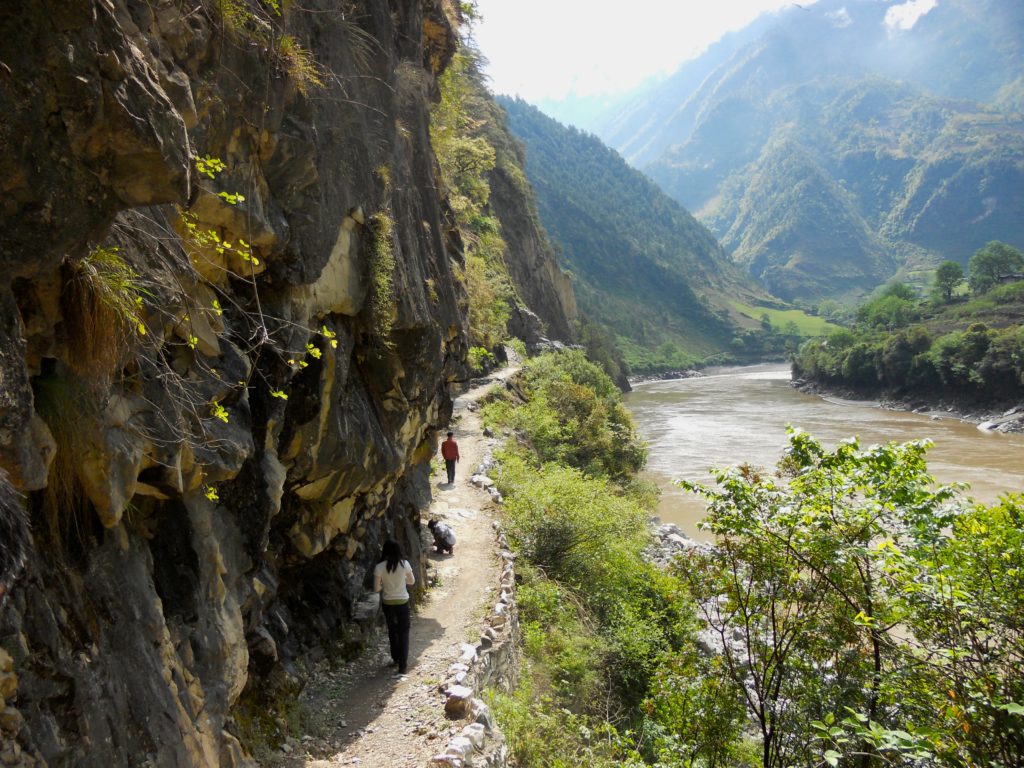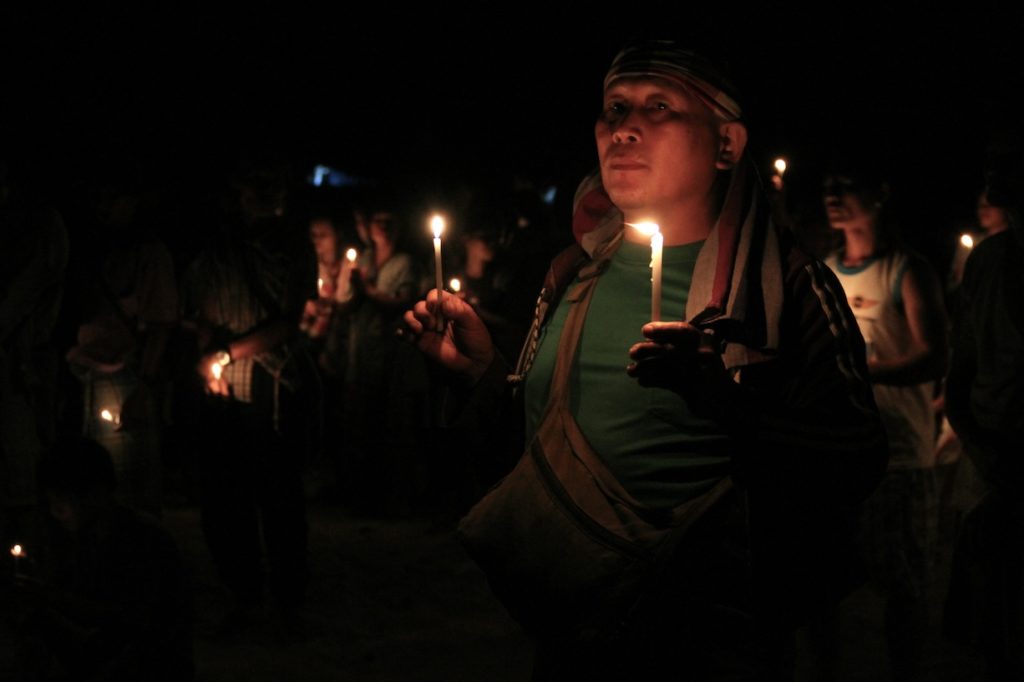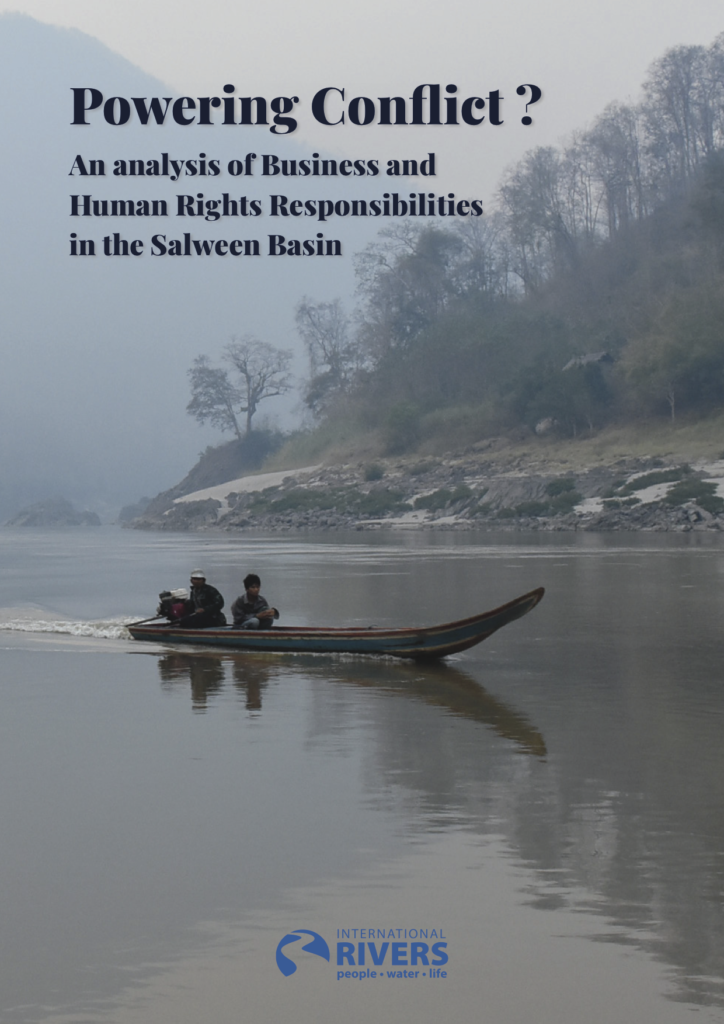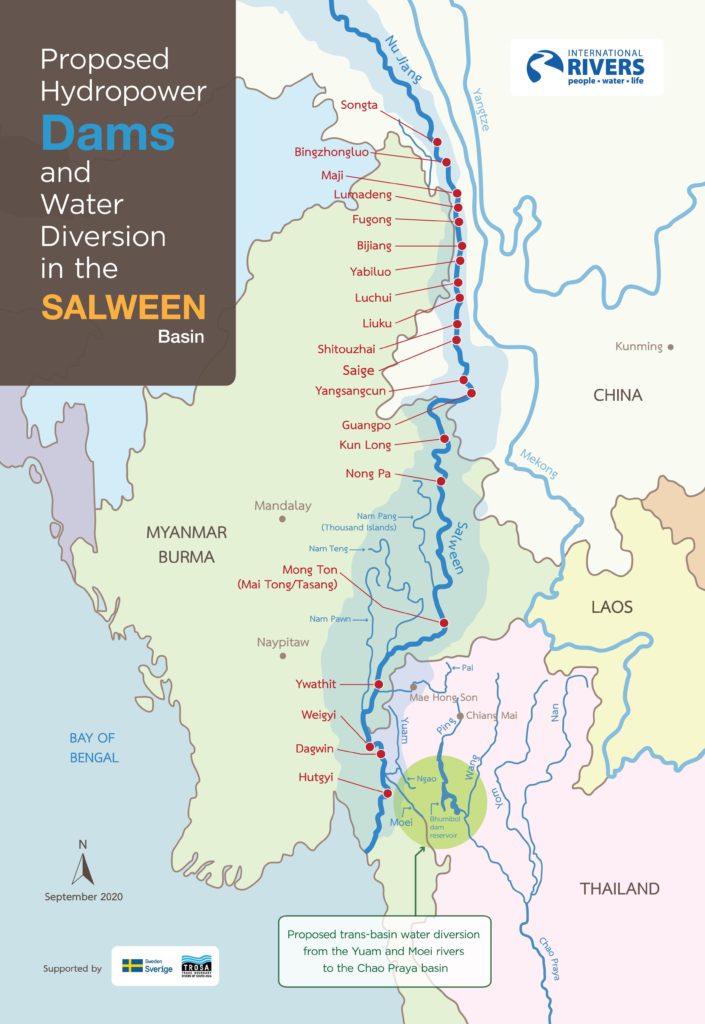The Salween River (also known as the Nu and Thanlwin) is the longest undammed river in mainland Southeast Asia. From its headwaters in Tibet to its estuary in Myanmar, it remains wild and relatively untouched, flowing through remote and pristine areas, including China’s Three Parallel Rivers UNESCO World Heritage Site. It supports the livelihoods of over 10 million people, sustaining the rich fisheries and fertile farmland central to the lives of indigenous and ethnic minority communities living along its banks.
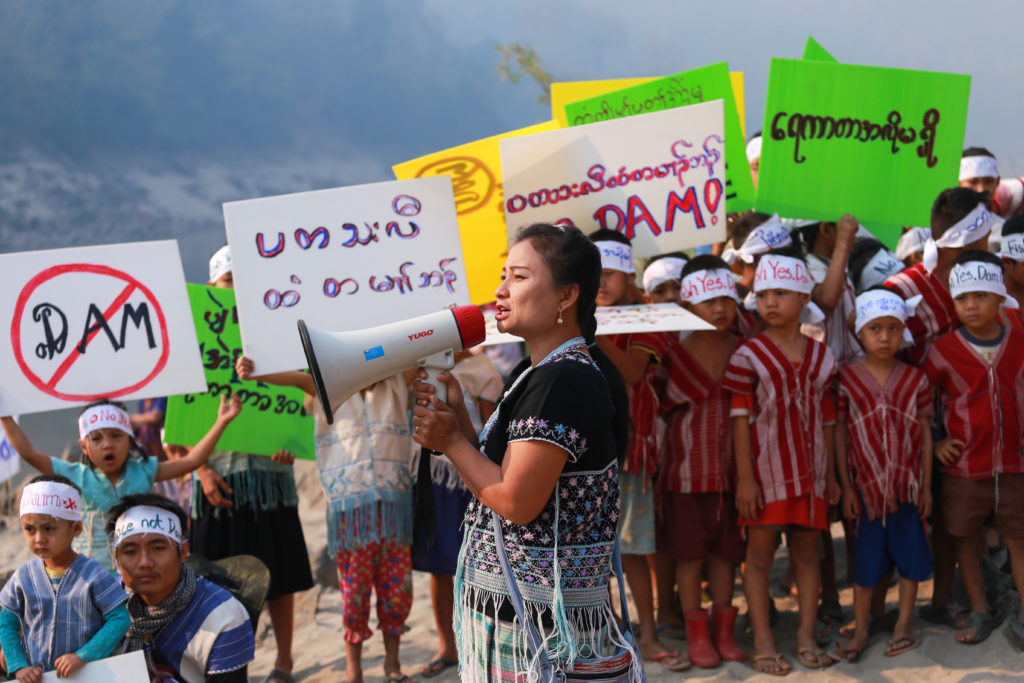
Unfortunately, the river has faced a series of destructive proposed dams for years, including the Kunlong, Naungpha, Mongton, Ywathit and Hatgyi hydropower projects. Many of these projects are located in areas of past and ongoing armed conflict, and people living in and around the proposed dam sites have endured militarization and human rights abuses.
Ethnic minority groups have been systematically and forcibly moved from their homes, and also robbed, tortured, raped or executed. At the Mongton dam site area alone, over 60,000 people have been forcibly relocated due to armed conflict.
The Strength of the Movement
Yet despite ongoing threats, a thriving river protection movement has arisen. Myanmar has been unable to construct the proposed dams thanks in part to community resistance. In 2016, China’s Yunnan government decided to stop all dam construction in the Nu Valley. These are huge wins for the communities and environmentalists who had fought the planned dams for over a decade.
The Salween has a fraught history of conflict and struggles for ongoing self-determination. But still it remains an astonishingly pristine river, a river marked by hope, inspiring a thriving movement of local communities and their allies campaigning successfully across borders to oppose destructive projects and keep the river free-flowing.
Related Resources
- Salween Factsheet (2016)

A photo journal of the Salween River including the Karen State (along the border between Thailand and Myanmar) to the remote corner of the Yuam River, a tributary of the Salween River in Mae Hong Son Province documenting sections of this iconic river and the communities and livelihoods at risk due to proposed hydropower projects and water diversions. Photos by: Wichai Juntavaro
Latest Updates
- Salween communities file lawsuit to halt the Yuam/Salween Water Diversion Project
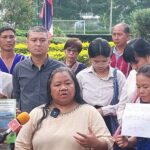 by Pianporn Deetes, Regional Campaigns Director, Southeast Asia Program October 18, 2023 – Over 80 people gathered at the Chiang Mai Administrative Court in Thailand today to mark the filing…
by Pianporn Deetes, Regional Campaigns Director, Southeast Asia Program October 18, 2023 – Over 80 people gathered at the Chiang Mai Administrative Court in Thailand today to mark the filing… - Free-flowing Salween River needs protection
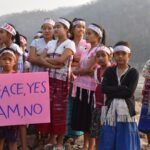 Originally posted in the Bangkok Post By Pianporn (Pai) Deetes, Thailand and Myanmar Campaigns Director of International Rivers This morning at Sob Moei — the confluence of the Moei and…
Originally posted in the Bangkok Post By Pianporn (Pai) Deetes, Thailand and Myanmar Campaigns Director of International Rivers This morning at Sob Moei — the confluence of the Moei and… - Today is a ‘Day of Action for Rivers’
 Two decades of indigenous peoples working to keep the Salween River free-flowing By Pai Deetes, Thailand and Myanmar Campaigns Director of International Rivers Originally published in the Bangkok Post On…
Two decades of indigenous peoples working to keep the Salween River free-flowing By Pai Deetes, Thailand and Myanmar Campaigns Director of International Rivers Originally published in the Bangkok Post On… - Women and Rivers’ Defender Spotlight: Mueda Nanawat
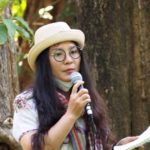 By Petro Kotze and Nalori Chakma Once an ‘unseen’ person, she now helps ensure her community does not disappear When I was born, my father tied my umbilical cord around…
By Petro Kotze and Nalori Chakma Once an ‘unseen’ person, she now helps ensure her community does not disappear When I was born, my father tied my umbilical cord around…

